The Aquarium of the Pacific: Open Ocean Project
- Global Health
- Public Policy
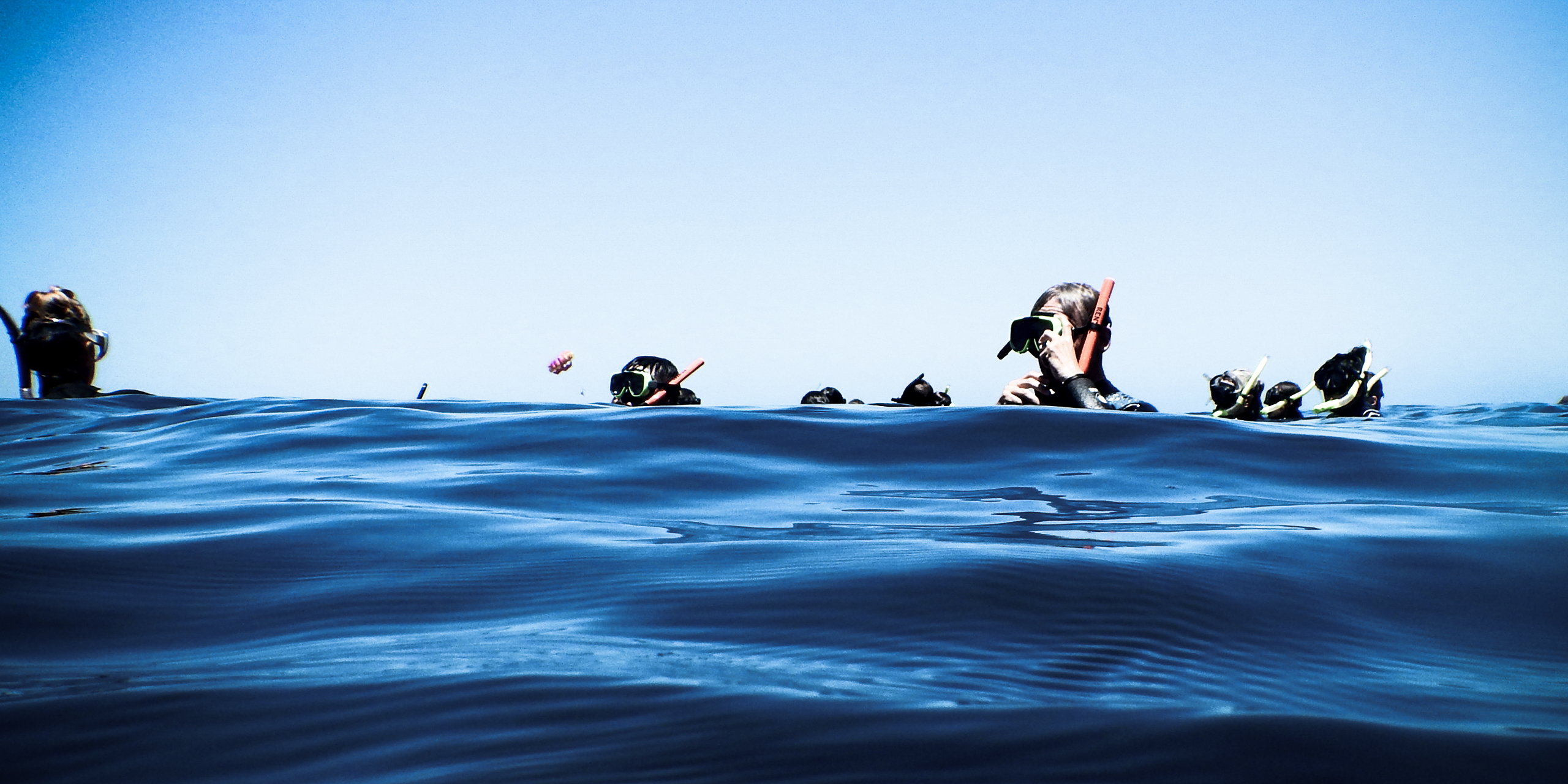
Summer 2013
Students in this Summer 2013 transdisciplinary studio applied their multi-departmental skills to create a public awareness campaign for the Aquarium of the Pacific in Long Beach, California centered around the topic of ocean exploration.
If we knew what was there we wouldn’t have to go.
– Jacques Cousteau
Background
Over 70% of planet Earth is covered in oceans, providing more essential ecosystems than land, yet almost 95% of the sea floor remains unexplored. In Summer 2013, the Aquarium of the Pacific partnered with Designmatters, the social impact department at Art Center College of Design, to mount a multidisciplinary studio with a mandate to bring ocean exploration to the forefront of public consciousness. Led by the Graphic and Interaction Design departments, the class devised a multi-layered strategy for movement they named “Open Ocean”, a system of public interventions envisioned as a powerful call-to-action for public-driven support of ocean exploration
Although the world’s oceans have long been a source of awe and inspiration, the majority of people are unaware that oceans provide more essential ecosystem services — that is, benefits that humans need for our survival — than do terrestrial environments. For example:
Oceans provide more than half the oxygen to the atmosphere. Every other breath we take comes, literally, from the oceans.
Oceans are Earth’s thermostat. Because of the high heat capacity of water, the oceans help keep Earth’s temperature in a range that has allowed humans to evolve and to thrive.
Oceans are great repositories of Earth’s biodiversity, and they provide a bountiful supply of human nutrition.
Oceans contain vast stores of biologically active compounds that can be synthesized into drugs to benefit humans. Many come from coral reefs, and many — probably most — have yet to be discovered.
Oceans help remove the primary driver of climate change — atmospheric C02 — by absorbing it. About half of all C02 emitted since the Industrial Revolution has been transferred to our oceans.
Oceans hold vast amounts of oil and gas beneath the sea floor and, perhaps more valuable, could potentially provide an unlimited supply of renewable energy.
This Transdisciplinary studio was unique in that it comprised students from seven different majors — Advertising, Environmental Design, Film, Graphic Design, Illustration, Product Design and Grad Industrial Design — and was led by Nik Hafermaas and Maggie Hendrie, respective chairs of Graphic Design and Interaction Design. The TDS studio was further enhanced by expert help from Designmatters Scholar-In-Residence Muireann McMahon, marine scientist and Media Design Practices student Skye Moret, and teaching assistant Janya Menges.
We were asked to create ideas for a public awareness campaign — our students responded with Open Ocean, the blueprint for a movement generating excitement and engagement across society for deep ocean exploration. Open Ocean is the creative answer to a challenge of wicked scale and complexity.
– Nik Hafermass, Chair, Graphic Design Department
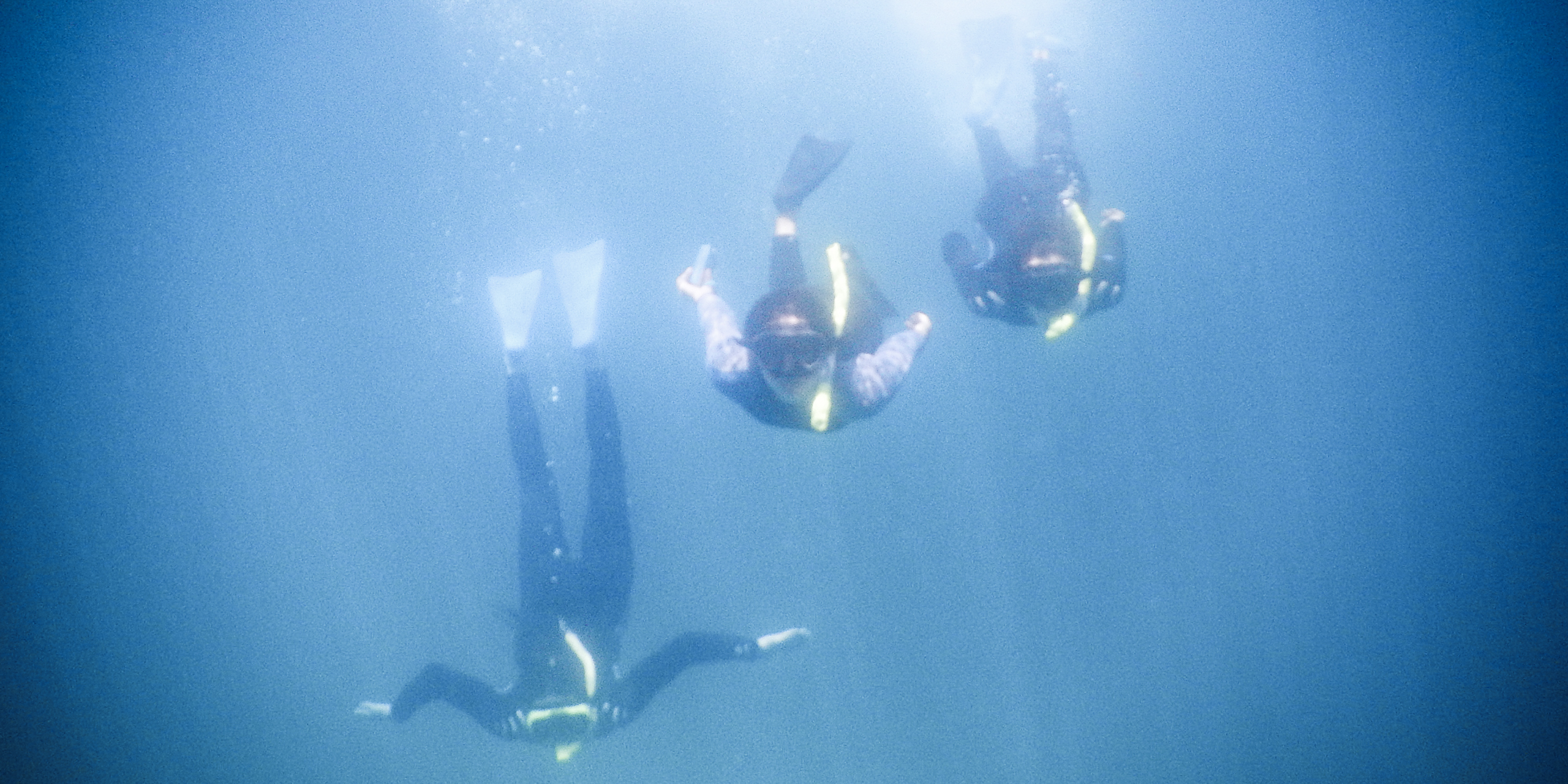
Design Brief
The design brief was simple: Create BIG, BOLD, RADICAL strategies to drive public inspiration and commitment to ocean exploration. Going deep was critical, and immersion in the fascination of the underwater world a must.
The creative challenge was to explore the inextricable links among humans, the ocean and the planet, and move the conversations outside the Aquarium and beyond their traditional audience. The carefully selected team of creatives used their design skills to PROVOKE, REFRAME and DISRUPT the common perceptions of the ocean in an effort to CAPTURE, ENGAGE and EXCITE both the wider public and our policy makers.
Research and Project Development
Week 1: The challenge was set by Aquarium President, Dr. Jerry Schubel at the project launch, and by way of introduction the students told stories of their relationships with the ocean, their greatest fears and the things that excited them most about working on Deep Future. Faculty leads Maggie and Nik described how small the known ocean actually is — about 5% of its total area — and how complex a task it would be to build awareness, engagement and interest so that we can discover the unknown 95%.
The first week saw the students take a bold step and launch themselves into the ocean off Catalina Island in an effort to see and feel life in the depths firsthand. The discussions that followed, on the ferry home, hinted at the creative potential lurking brewing inside the design team.
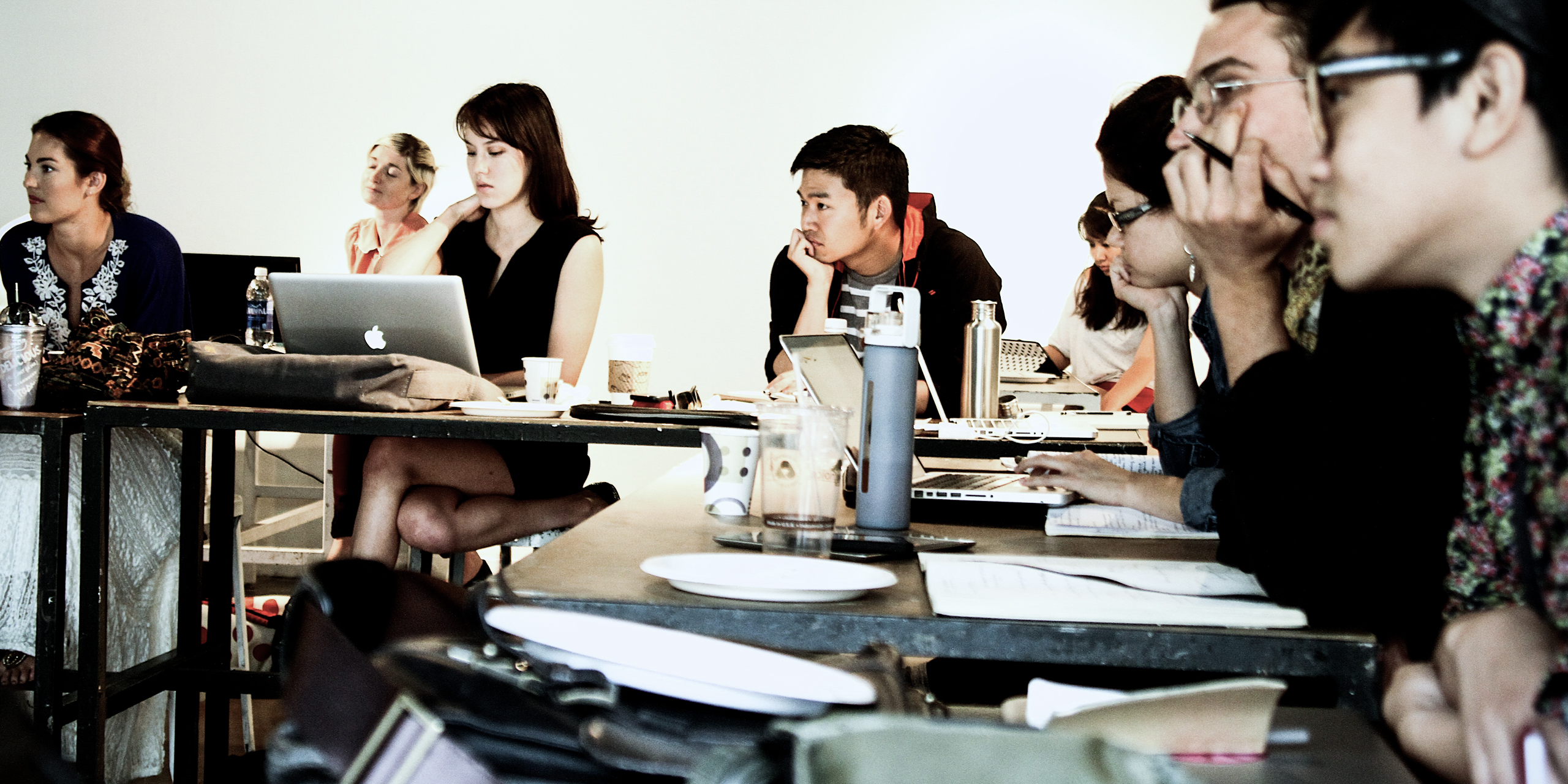
Week 2: The students quickly realized that creating a campaign would fall short of the project’s goals, since campaigns are typically short-lived, have a very specific function and are generally commercially based. What was needed was a MOVEMENT THAT WOULD SPARK A SEA CHANGE in the public’s perception of and engagement with ocean exploration. A movement could offer public adoption and traction that a campaign couldn’t. In order to understand the mechanics of a movement, each designer dissected a successful movement from recent and more distant history and identified the stages, stakeholders and contexts that needed to exist for an idea to move from the periphery of society into the center. In order to unpack movements further, organizational change expert Morgan Marzec was enlisted to share her expertise on how to engage people and create these systemic shifts.
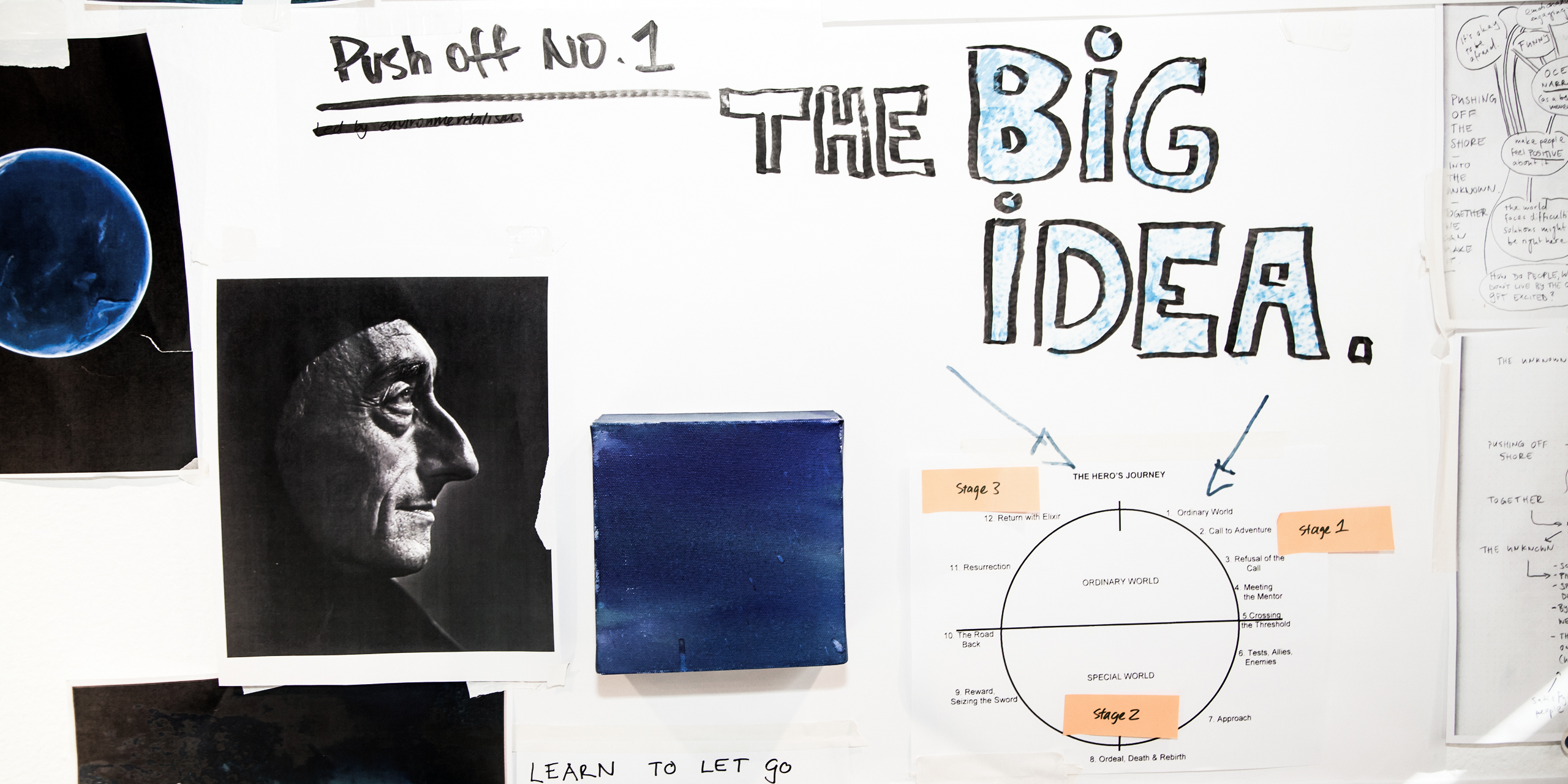
Week 3: This phase of the project began with an the expert panel of Dr. Jerry Schubel, Dr. Jeff Schell, Dan Goods and our resident marine scientist, Skye Moret, to discuss the ideas of ocean vs. space exploration, data visualization, scientific research, technological innovations, government involvement and funding sources.
The students divided into four teams and explored the topic under the filters of Technology, Marine Science, Myth and Imagination, and Community. These teams tested small ideas to see what worked and what didn’t. They put mermaids on Colorado Blvd. in downtown Pasadena and chalkboards on the Santa Monica pier; they talked to passersby and asked them to create stories and invent the future of ocean life. The following two weeks revolved around the design teams working through these ideas and developing unique solutions to ensure their movement had strategies for traction. From this work, four clear directions emerged and were subsequently presented during the midterm review.
Building on the feedback from midterm, the teams merged into one group under an umbrella movement idea that comprised several strands through which the public (experts and novices alike) could engage. These strands would draw together into a central core where the public consciousness would be fully engaged with the sea, and the 95% of the previously unknown ocean could now potentially become known.
Week 10: Offered a once in a lifetime opportunity for several of the students as they presented the studio’s work, on behalf of their class, in front of 100 of the nation’s top explorers at the inaugural Ocean Explorers 2020 Forum. Here they shared their design process and hinted at the ideas underpinning the movement. The Forum feedback was overwhelmingly positive, and the unique, design-driven approach engaged the scientific audiences in a new and interesting way. The students also capitalized on the high caliber of the attendees and interviewed some of the world’s most famous ocean explorers and conservationists, including Sylvia Earle and Don Walsh.
The team worked tirelessly during the final two weeks to plan, design, refine and build an exhibition to showcase their ambitious movement.
Outcomes and Deliverables
OPEN OCEAN is Presented
Week 13: At the invitation of Dr. Schubel, in the project’s final week, the team converted the Aquarium’s “Ocean Room” into the vortex of their movement, and the final exhibition space for the project outcomes. Though this the room traditionally exhibits Science on a Sphere films to the public, the inaugural OPEN OCEAN event modified the venue into a total complete “movement experience.” Based on the core idea of the movement as strands moving toward a central, global realization,would consist of strands of action convening toward a central impact, glowing strands were installed on the floor oriented to orient the audience to and from wall exhibits to the sphere in the room’s center. Harnessing the movement’s name and brand, OPEN OCEAN, the sphere projected animations of the new logo and its innovative potential.
Core strands of OPEN OCEAN:
In the final movement there are four strands, or entryways, for people to get involved with OPEN OCEAN. Audiences are drawn into the movement from the edges, with each strand offering an easy access point, and subsequently move drawing participants deeper into the movement with greater impact. All strands interconnect, which strengthens the potential of OPEN OCEAN.
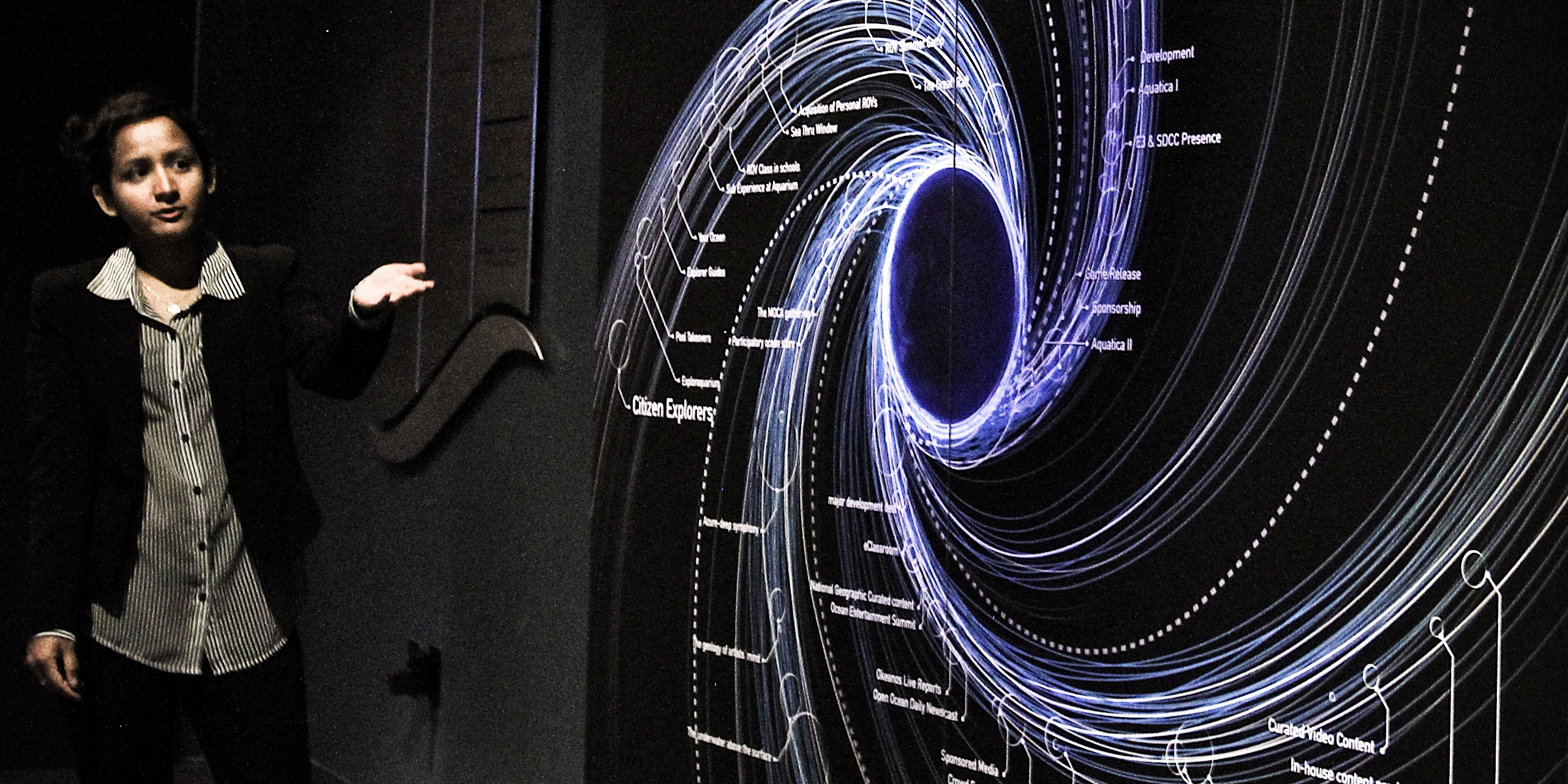
Play to Discover: An open-ended and collaborative game calledHalios engages the community in the structure of the content and ain a gaming environment. Aimed at three primary groups — gamers, developers and scientists — the game is cross-platform: it can work via personal computer, console or mobile device, all in different ways. Developers can prototype new ocean exploration ideas and technologies, while both academic- and citizen-scientists can feed in real-time data to which the gaming environment can respond. By mimicking real marine conditions and how they change, an educational component evolves. Gamers get involved because it is unique, fun and innovative. Participants in the game have a special place in a virtual and physical ecosystem, with different ways to get involved, bringing ocean exploration to the forefront of popular culture. This team offered beautifully rendered illustrations of the game screens, along with a map of the diverse user framework and pathways through time spent with Halios.
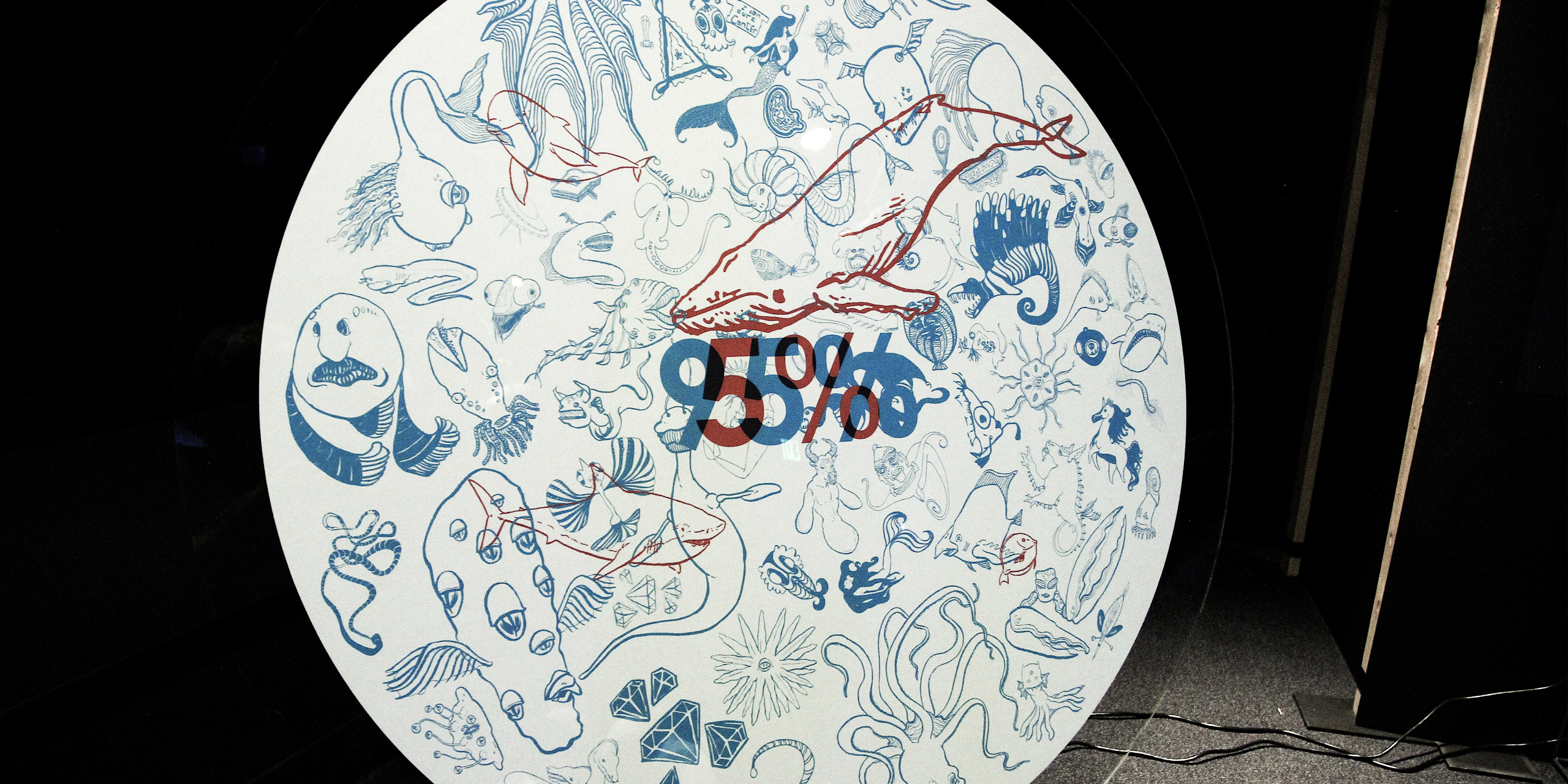
Art + Science: A true collaboration between artists and scientists that makes science comprehensible to broader audiences, Art + Science aggregates art, involves installations, storytelling and a funding framework in support of the movement. Using Potentially leveraging National Science Foundation grant money that is intended to fund “broader [community] impacts” for every U.S. science project, this strand funnels a monetary framework toward artists and designers. The result is a uniquely realized, visually stunning installation that inspires all ages to join OPEN OCEAN and learn or participate in a new and different ways. As an example of an Art + Science collaboration, this group wondered, How do you visualize the 95% and make it interactive? By creating large, fantastical illustrations of undiscovered creatures, the the exhibition audiences used uses different flashlight colors to explore the depths and reveal potential marine creatures for themselves.
Citizen Explorer: A framework of multi-level engagements that captures the imagination of potential explorers through clear encounters, and fosters a sense of community through OPEN sharing and communication. One of the main focuses is the “discovery kit”: a remotely operated vehicle (ROV) that encourages OPEN-mindedness and personal exploration. From citizen Citizen explorer Explorer meetings, ROV classes in schools and pool takeovers with ROVs, to at-sea, boat-based events, citizens Citizens develop a personal and meaningful connection to the ocean. This strand challenges the idea of exploration being in the realm of enigmatic experts, and moves it toward the idea that everyone is capable of exploration. Citizen Explorer outcomes can provide content for the OPEN OCEAN network channel (below) and can be used to collect data and inform science and/or the Halios game strand.
Open Ocean Network: A 24-hour Web-based network telling ocean stories, the channel has three areas of focus: highlighting different explorers, curated Web content, and user-generated content. By promoting the network with ocean-film contests, ROV explorations and citizen stories, the diversity of participation can be highlighted in unique ways. Dr. Schubel suggested that this network might also be a great outlet for educational films already streaming from expeditions and aquariums, offering a more enticing look at current exploration practices.
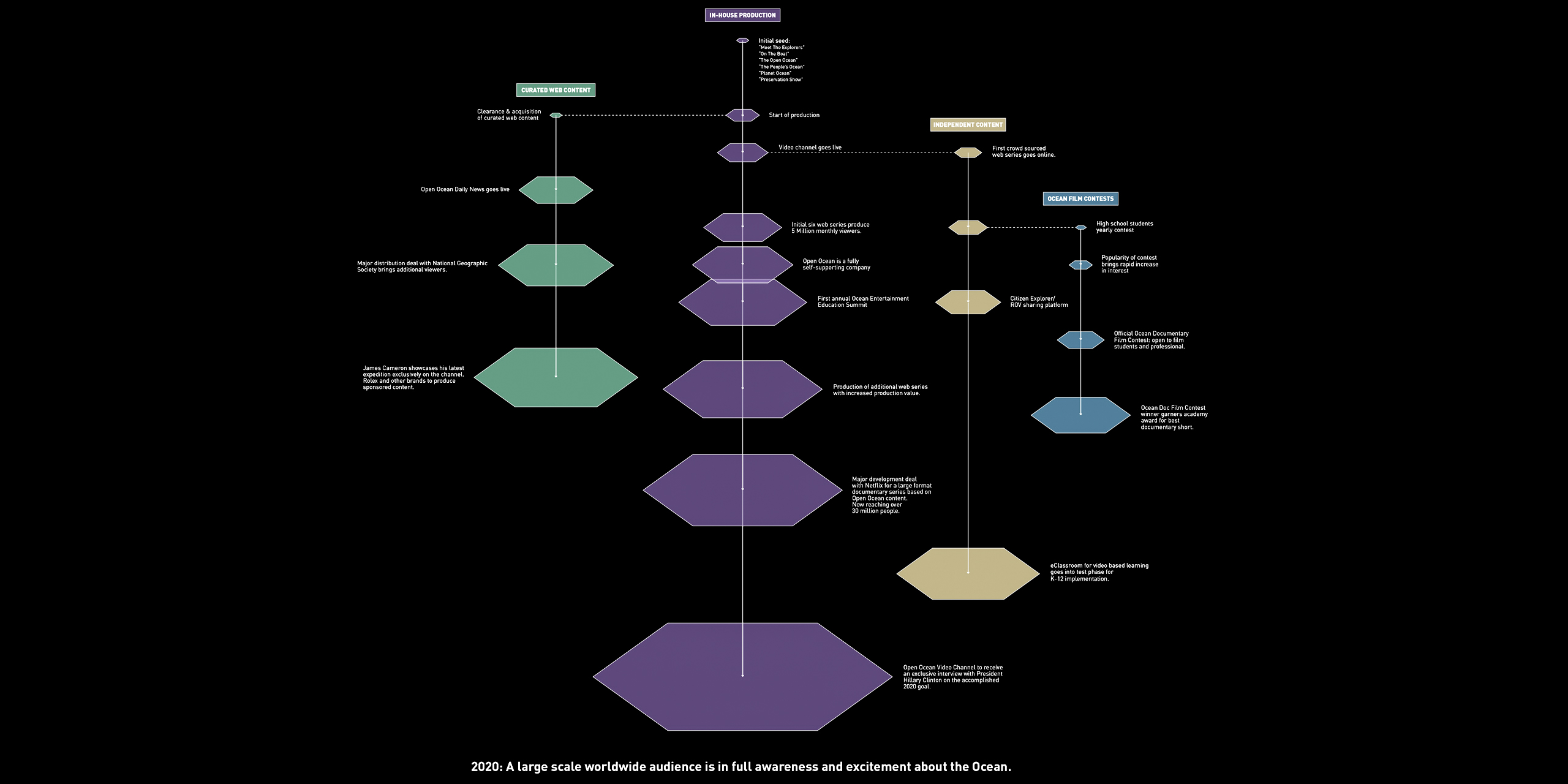
Next Steps
While OPEN OCEAN is currently in a conceptual stage, stakeholders of the movement are encouraged to embrace the name OPEN OCEAN, use the logo and its breadth of diversity, and to incorporate the website openocean.me and Twitter account into further strands and explorations of the movement. All of the participants of the final exhibition, now immersed, felt inspired to carry the movement forward as the first followers. Dr. Schubel was very encouraged by the outcomes — he plans to put many of the student ideas into action and will “take them on the road” in the coming months and intends to explore putting ideas into action by sharing the project outcomes at upcoming various conferences and meetings, inspiring aiming to inspire other stakeholding organizations and institutions to embrace OPEN OCEAN as a mechanism for taking action.
